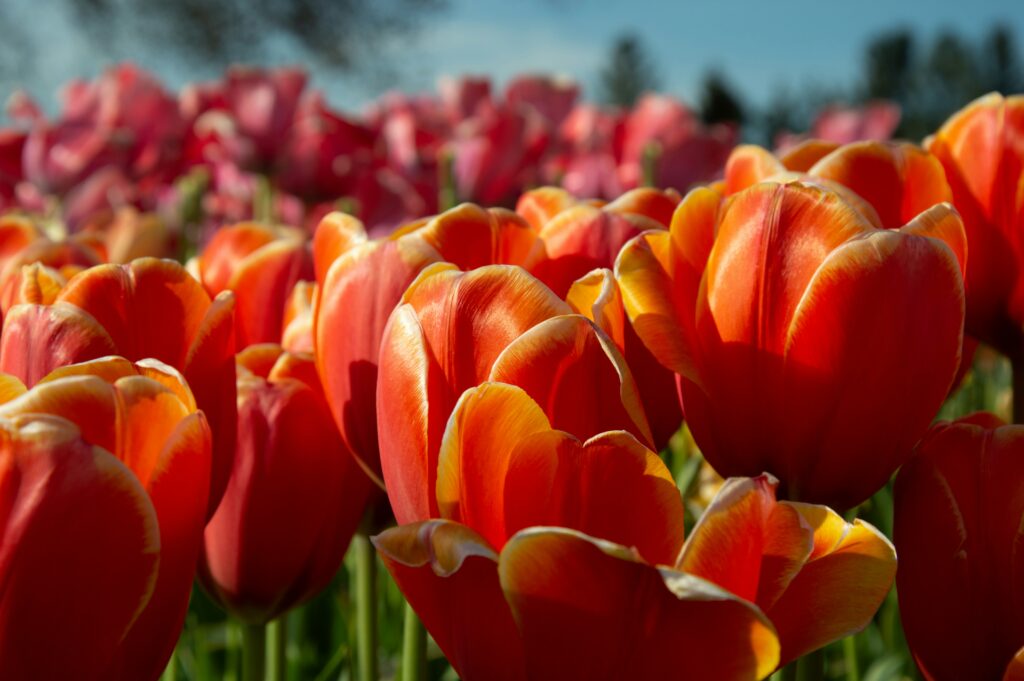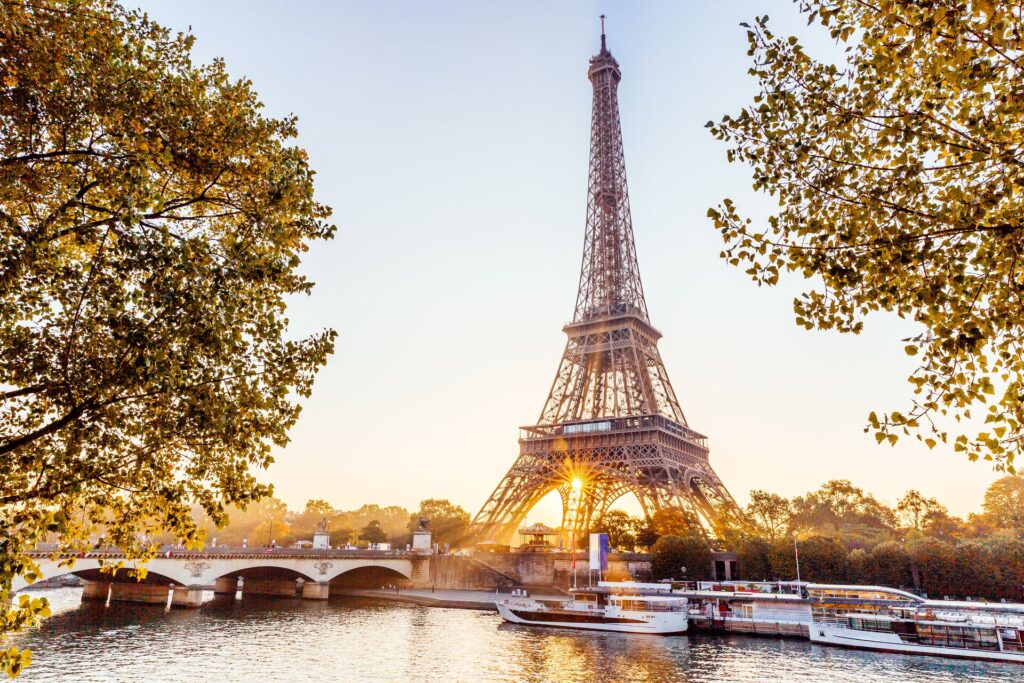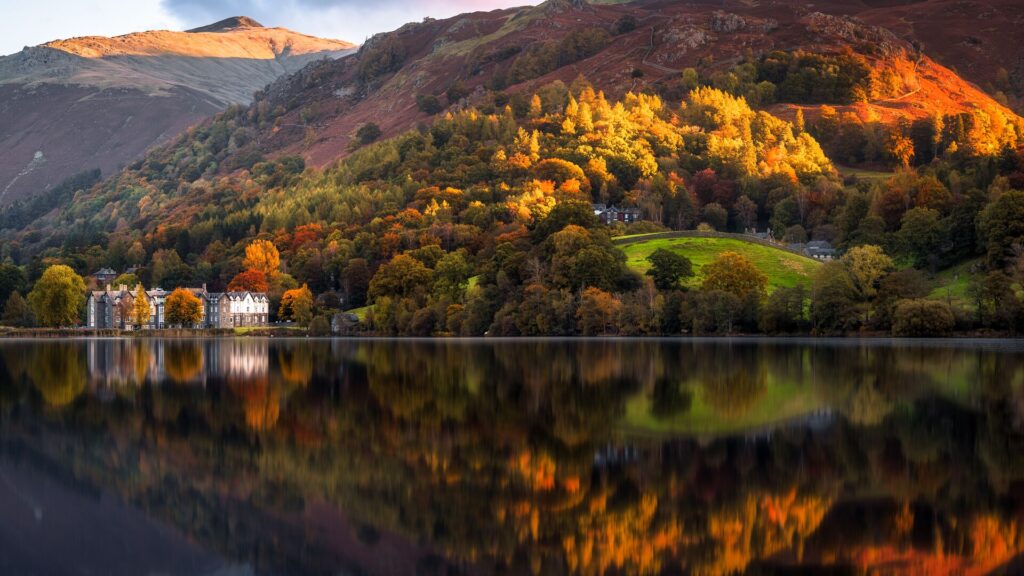On the banks of the majestic Nile River, Cairo is hailed as a transcontinental capital of culture. A captivating fusion of ancient wonders and modern marvels, the city effortlessly bridges the gap between the past and the present with a rich history spanning over millennia.
We spoke with Travel Director and Egyptologist Hani to learn more about this captivating capital city, and some of the other delights that await on our Wonders of Egypt tour.
A LOVE FOR THE PYRAMIDS

“I came here to Cairo when I was 16 years old to study at university and the first area I lived in was in front of the Giza pyramids,” says Hani.
“Imagine waking up in the morning and you have 5000 years of history with the pyramids out of the window. You know that you’re one of very few people who are having the privilege of having one of the seven wonders of the ancient world, just beyond their back yard.”
For travel inspiration: Egypt destination guide
FUELLING A THIRST FOR KNOWLEDGE
“When I was younger and I would ask my father about the pyramids, he would say ‘they are just piles of rocks’, Hani tells us. “That was a simple answer for him, but the answer was never satisfying for me. There was so much I wanted to know.”
“As a Travel Director and Egyptologist, I remember all these questions that were in my mind when I was child, and I know they are in the mind of our guests. My passion is to share the knowledge with them, and the answers I found through my study of Egyptology.”
CAIRO
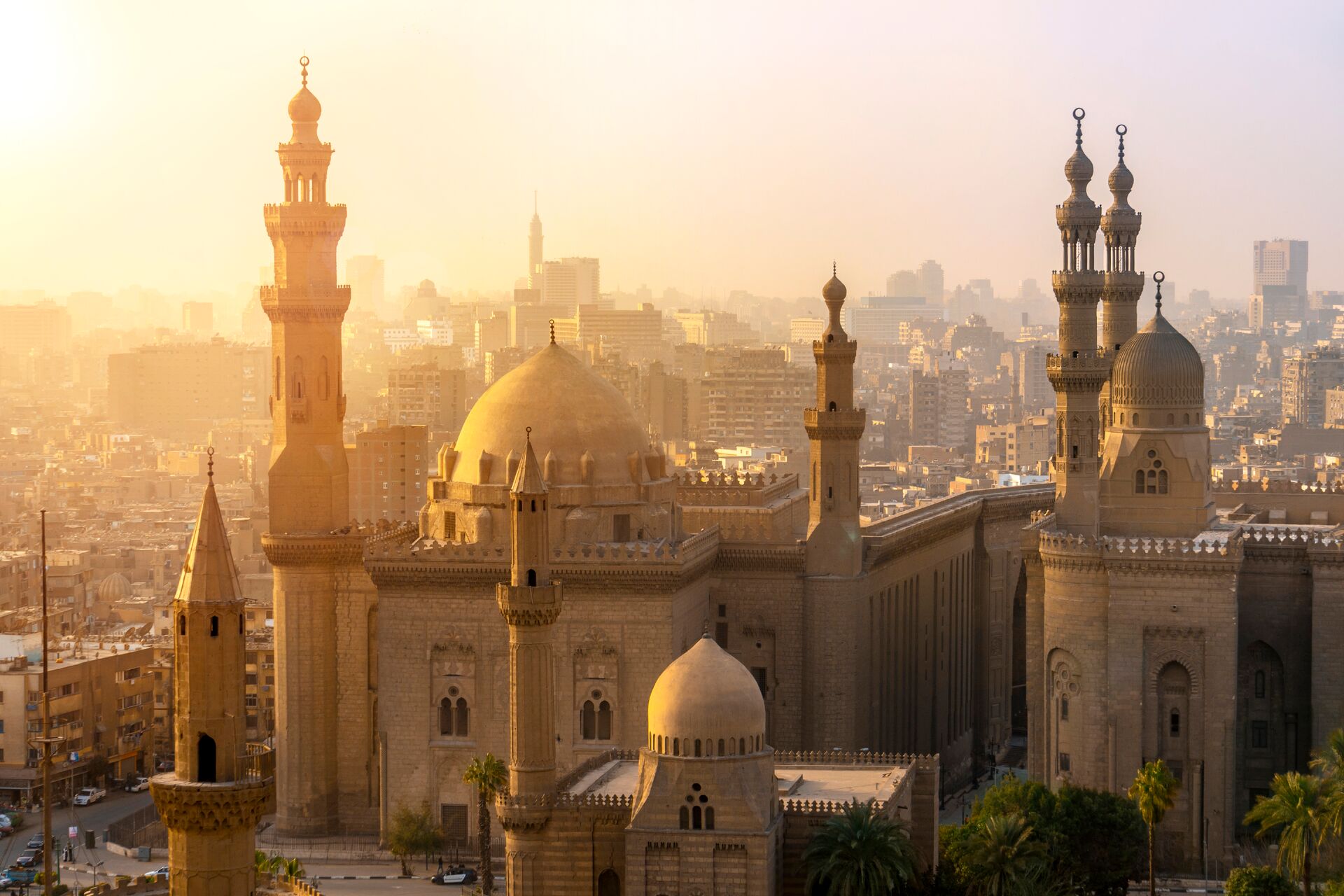
“Cairo is a very big city; its home to about 22 million people.,” says Hani. “When guests first come to Egypt, they imagine Cairo is a desert with camels and pyramids. In fact, it’s a capital of culture and, in numbers, almost the entire Australian population live here.”
“When you arrive for the first time you smell the scent, and you smell the history,” Hani explains. “In the Islamic quarter of Cairo, for example, you feel like you’re taken back to the 14th and 15th century. Then things become even older as you travel to the pyramids and are taken back 5000 years.
“The city is divided by the famous Nile River. The eastern side is called Cairo and the western side is called Giza. On Wonders of Egypt we visit both, including the pyramids and the city of Memphis in Giza, and the Egyptian Museum, the Citadel of Saladin and the Great Alabaster Mosque on the eastern side. All great sights of any Cairo travel guide.”
A melting pot of diverse cultures, Cairo attracts writers, artists and artisans from all over Africa and the Middle East. Bustling streets, traditional markets and thriving art scene offer a glimpse into the multifaceted tapestry of the continent. And diverse culinary traditions make it a foodie’s paradise, from street food to fine dining.
You may also enjoy reading: Secrets in the sand: the thrill of uncovering Egyptian artifacts
THE GREAT PYRAMIDS
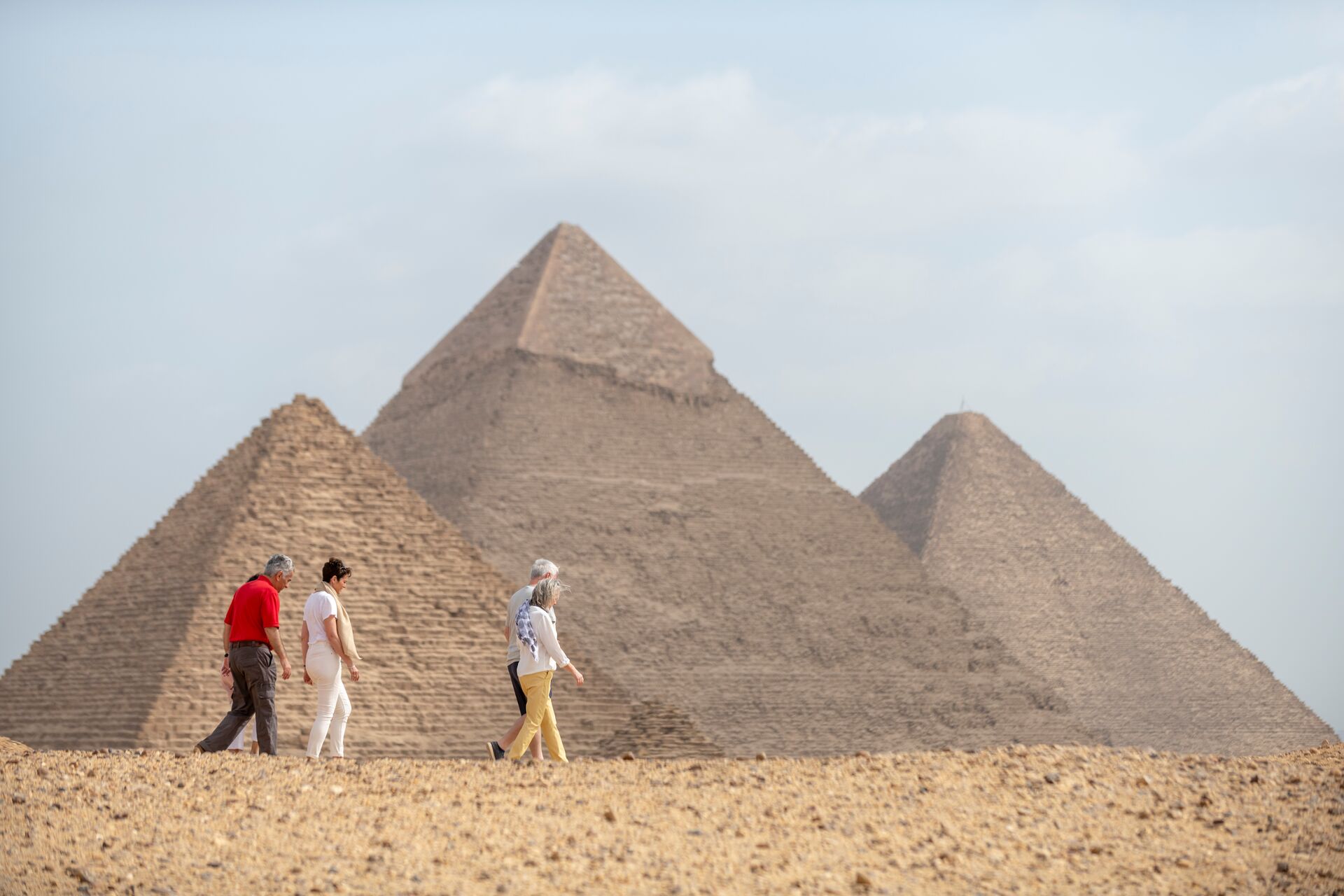
“I cannot describe for you the reaction when our guests get their first sighting of the pyramids, Hani tells us. “You come out from the center of Cairo city and then all of a sudden, bang the pyramids are there. It is spectacular. You can sometimes see tears in their eyes because for many it is a lifelong dream come true.”
On day eight of Wonders of Egypt, you’ll explore some of the finest monuments in this capital of culture. Visit the pyramids of Giza and Sakkara to view the Step Pyramid of Zoser, which dates back 2686 B.C., making it the oldest pyramid in the world. You’ll also see Memphis, capital of the Old Kingdom and home to the colossal statue of Ramesses II and the great Alabaster Sphinx.
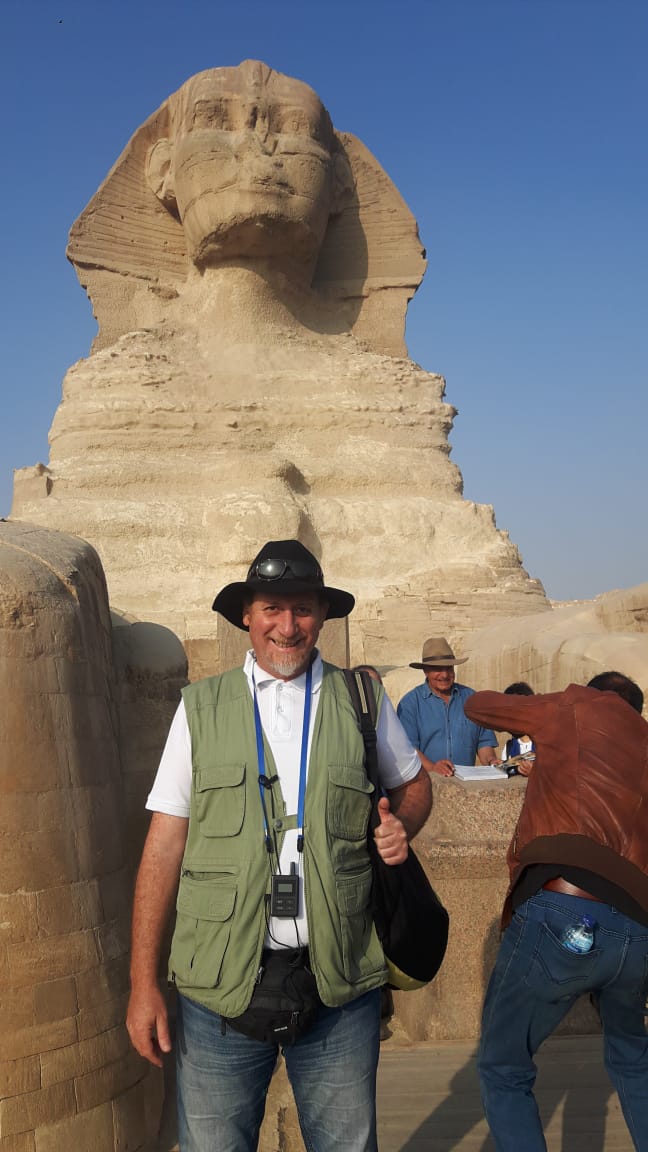
“We start at Sakkara with the Step Pyramid of Zoser, telling the story from the beginning of how and why the pyramids were built, before moving onto the Great Pyramid.
“We then venture inside one of the pyramids, which is very special. The fact that you’re able to go inside one of the seven wonders of the ancient world and explore it from inside is an amazing feeling, to see how and where Egyptian Kings were buried.
“You end up your time right in the front of the sphinx, so close that you can see the details of the face and the body of the lion.” The Great Sphinx of Giza is the largest monolith statue in the world, measuring 240 feet long and 66 feet high. “It is believed to date back to 2551 BC and is built out of one single block of stone,” Hani explains.
Experience this on: Wonders of Egypt
THE EGYPTIAN MUSEUM
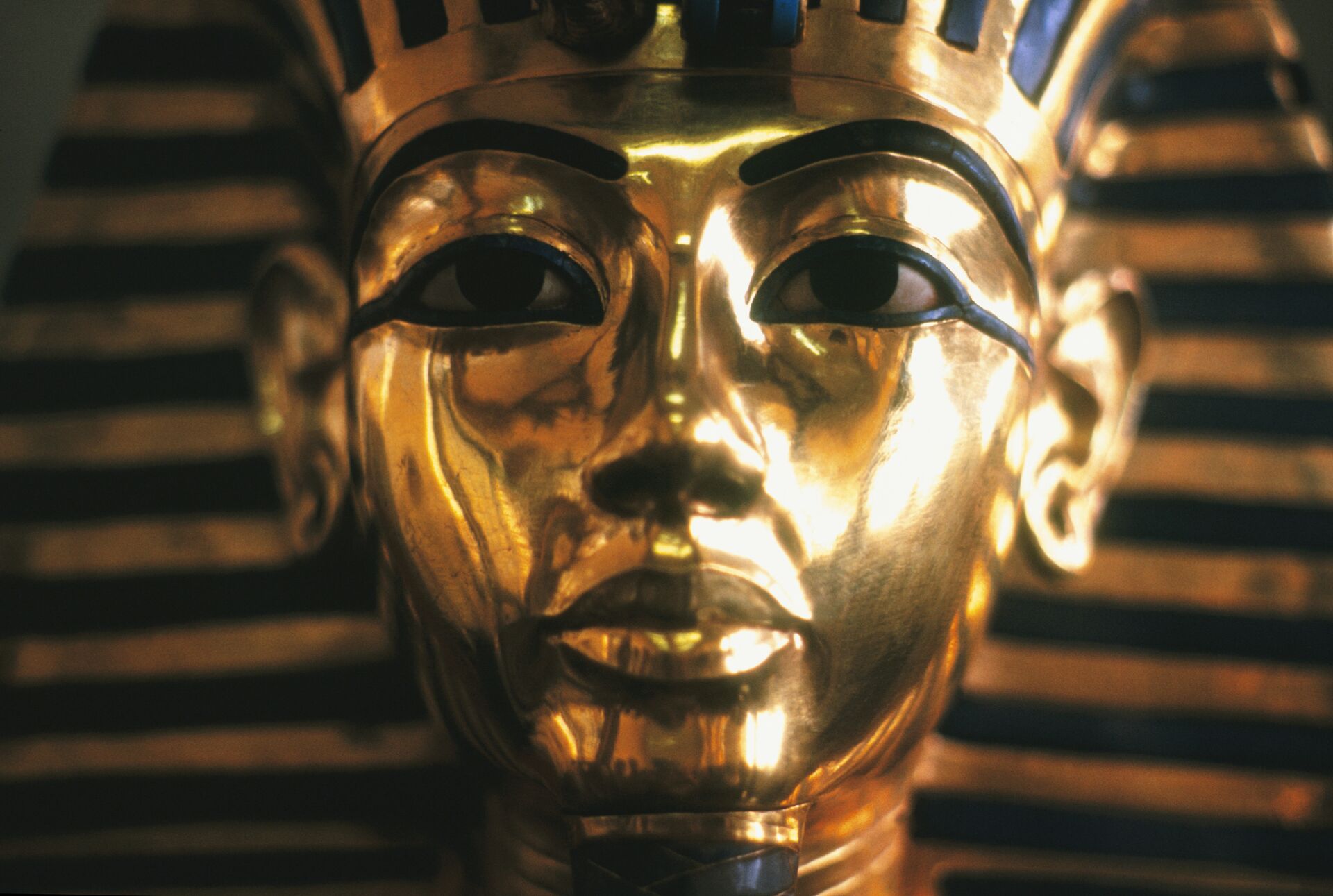
The oldest archaeological museum in the Middle East, the Egyptian Museum is a treasure trove of ancient wonders and one of the important places to visit in Cairo. With a collection spanning over 120,000 artifacts, it stands as one of the world’s most significant repositories of Egyptian antiquities.
Housing iconic treasures like the golden mask of Tutankhamun, sarcophagi, papyrus scrolls and intricate hieroglyphic inscriptions, the museum offers visitors an immersive journey through ancient Egypt’s history and culture.
“We go to the Egyptian Museum the day before we see the pyramids,” explains Hani. “This offers a good preparation for guests to absorb the history and understand the time period that we’re talking about.”
You may also like reading: 100 years on: The fascinating story behind the discovery of King Tut’s Tomb
THE RIVER NILE
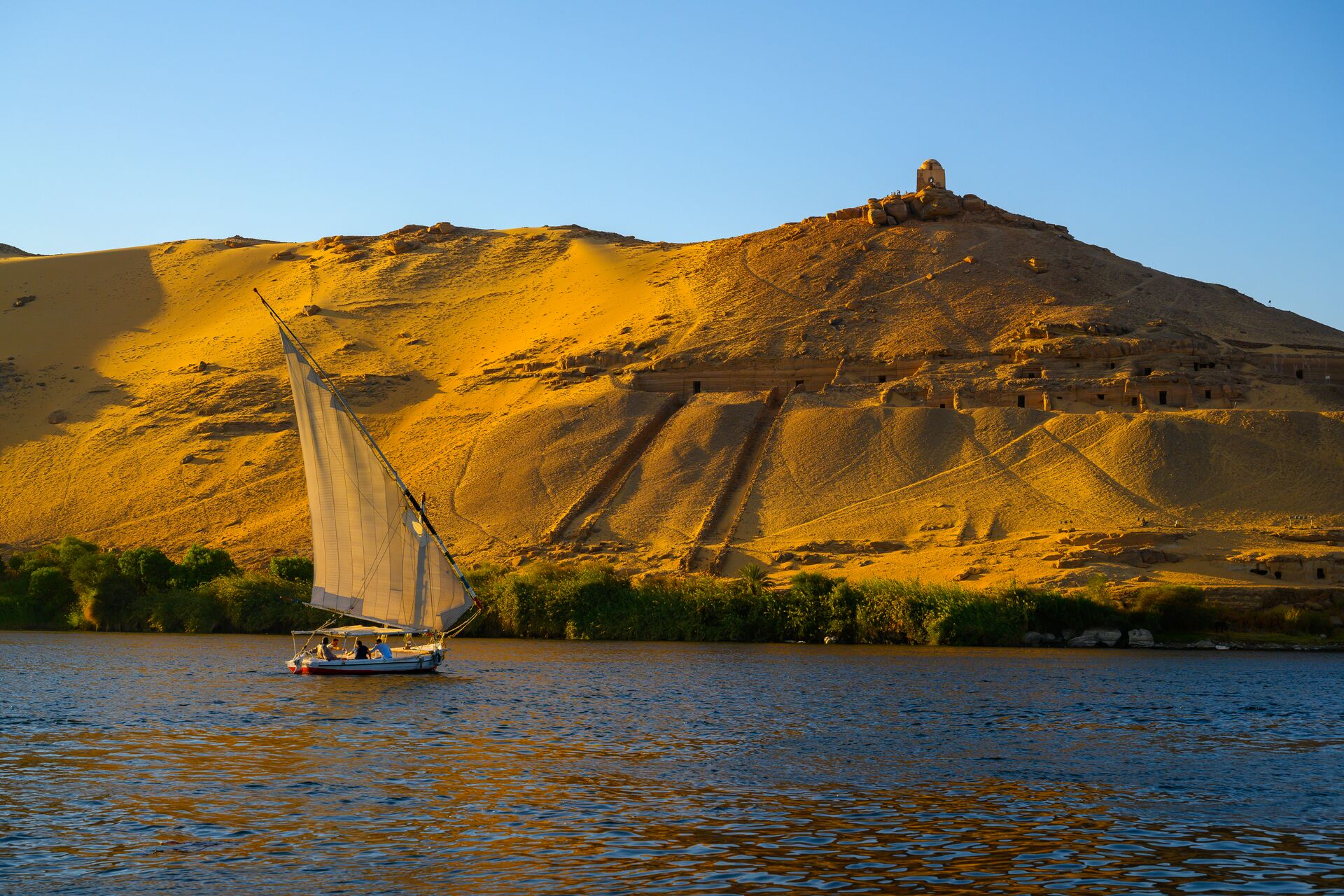
This legendary waterway stretches over 4,135 miles and holds immense historical and cultural significance. It winds through eleven countries, including Egypt, where it plays a pivotal role in the nation’s heritage. Cairo owes much of its existence and prosperity as a capital of culture to the Nile. The river serves as a lifeline, providing water for irrigation, transportation, and a source of livelihood for countless communities along its banks.
It is also one of the rivers that contributes 90% of the world’s garbage into the oceans. In Cairo, the capital of culture, guests on Wonders of Egypt have the opportunity to join a MAKE TRAVEL MATTER® Experience and meet the members of VeryNile, the first large scale initiative to clean this famous river.
VeryNile offers employment opportunities and financial incentives for collecting, sorting, compacting and creating products out of recyclable waste.
“It’s very interesting to be a part of this organization that actually helps clean up the river,” Hani explains. “As the Greek historian Herodotus said, Egypt is the ‘gift of the Nile,’ because without its water there will be no life in Egypt. So having the water of the Nile polluted, that’s something that breaks the heart.”
You may also enjoy: 5 MAKE TRAVEL MATTER Experiences that will connect you to extraordinary people
AL MOEZ
MOSQUE OF MOHAMMAD ALI
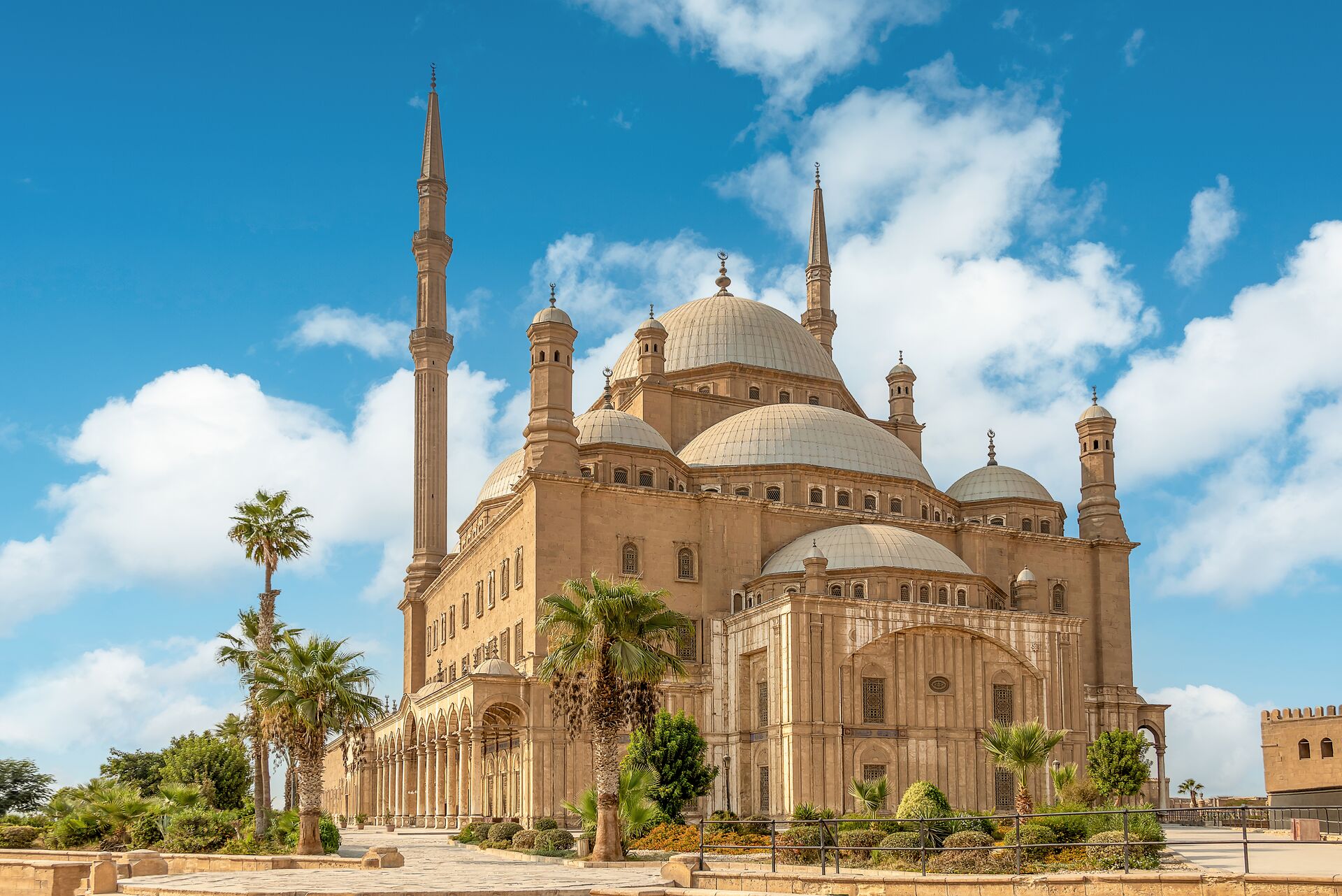
The Mosque of Muhammad Ali, also known as the Alabaster Mosque, is a prominent landmark in Cairo, the capital of culture. A significant religious site, it sits atop the Citadel of Saladin offering breathtaking panoramic views of the city.
“The mosque itself dates back to the 19th century. Mohammed Ali became the ruler of Egypt in 1805, when Egypt was a part of the Turkish Empire,” Hani explains, explaining that rulers were sent to Egypt to rule on the behalf of the Ottomans.
A leader of great aspirations, Hani tells us that “Mohammad Ali wanted to send a message to Turkey that Egypt was no lesser a country and invited the same engineer who designed the Blue Mosque in Turkey to design a replica in Cairo.”
Built between 1830 and 1848, the mosque stands as a remarkable example of Ottoman architecture, blending Turkish and Egyptian styles. Massive domes, elegant minarets and the use of alabaster in its construction emphasizes its grandeur. The interior features intricate detailing, including grand chandeliers and ornate decorations.
“Outside the mosque we have a beautiful view overview for the city of Cairo,” says Hani. “On a clear day you can see the pyramids in the background, it’s quite spectacular.”
THE KARNAK TEMPLE COMPLEX
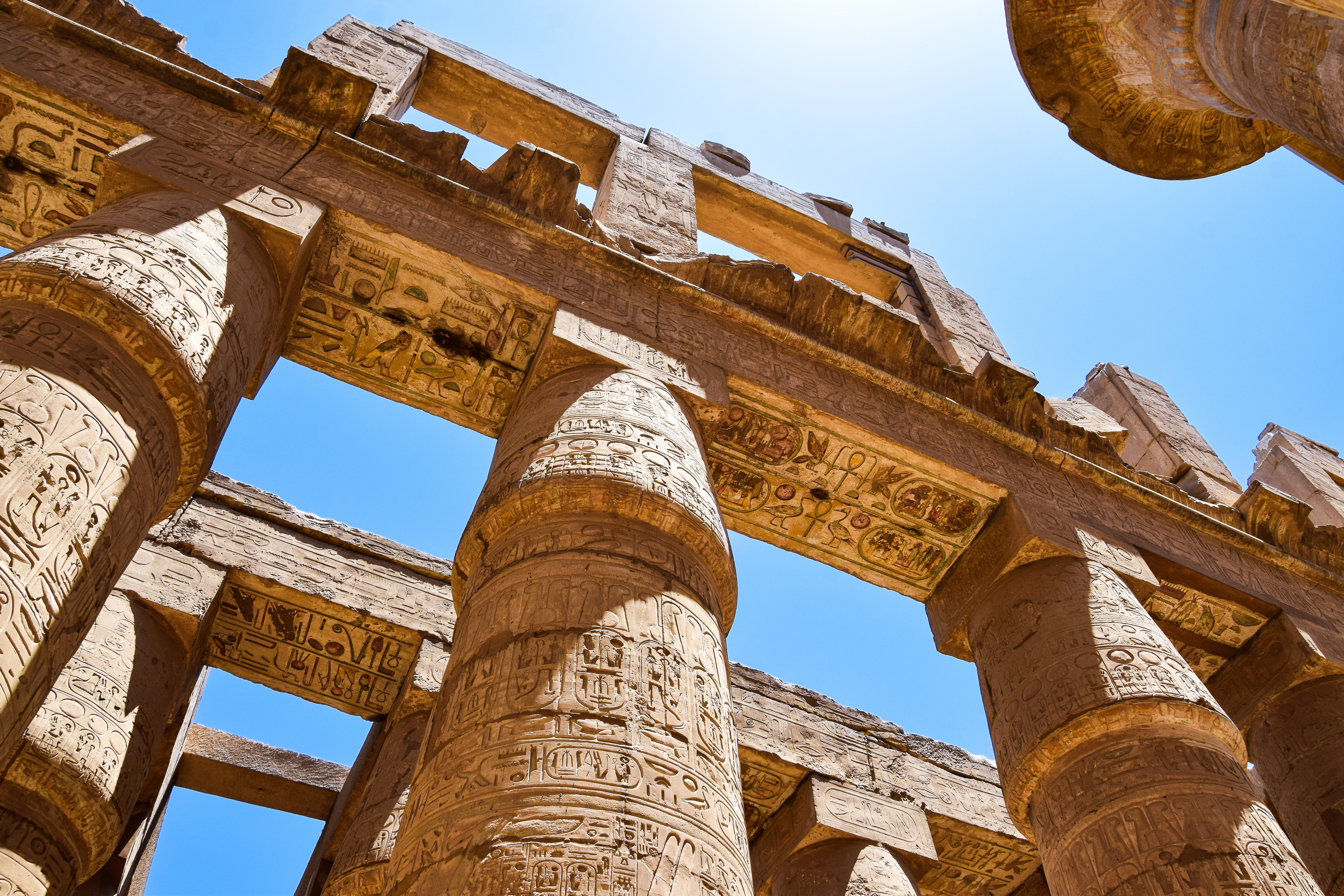
“The Karnak Temple is a wonderful stop,” says Hani. “You’re literally walking in between 4000 years of history. The further you walk inside the older in time it becomes.”
The Karnak temple complex at Luxor was developed over more than 1,000 years, between 2055 BC and 100 AD. It was, at its peak, the largest and most important religious complex in ancient Egypt.
“For centuries, the colors on the 134 columns of Ramesses II were hidden under the dust of time,” Hani says. “But since last year they’ve been cleaning them, so even visitors who came to Egypt three or four years ago will now see a different Karnak Temple.
You may also enjoy: Six Spectacular Egyptian Temples
AVENUE OF THE SPHINXES
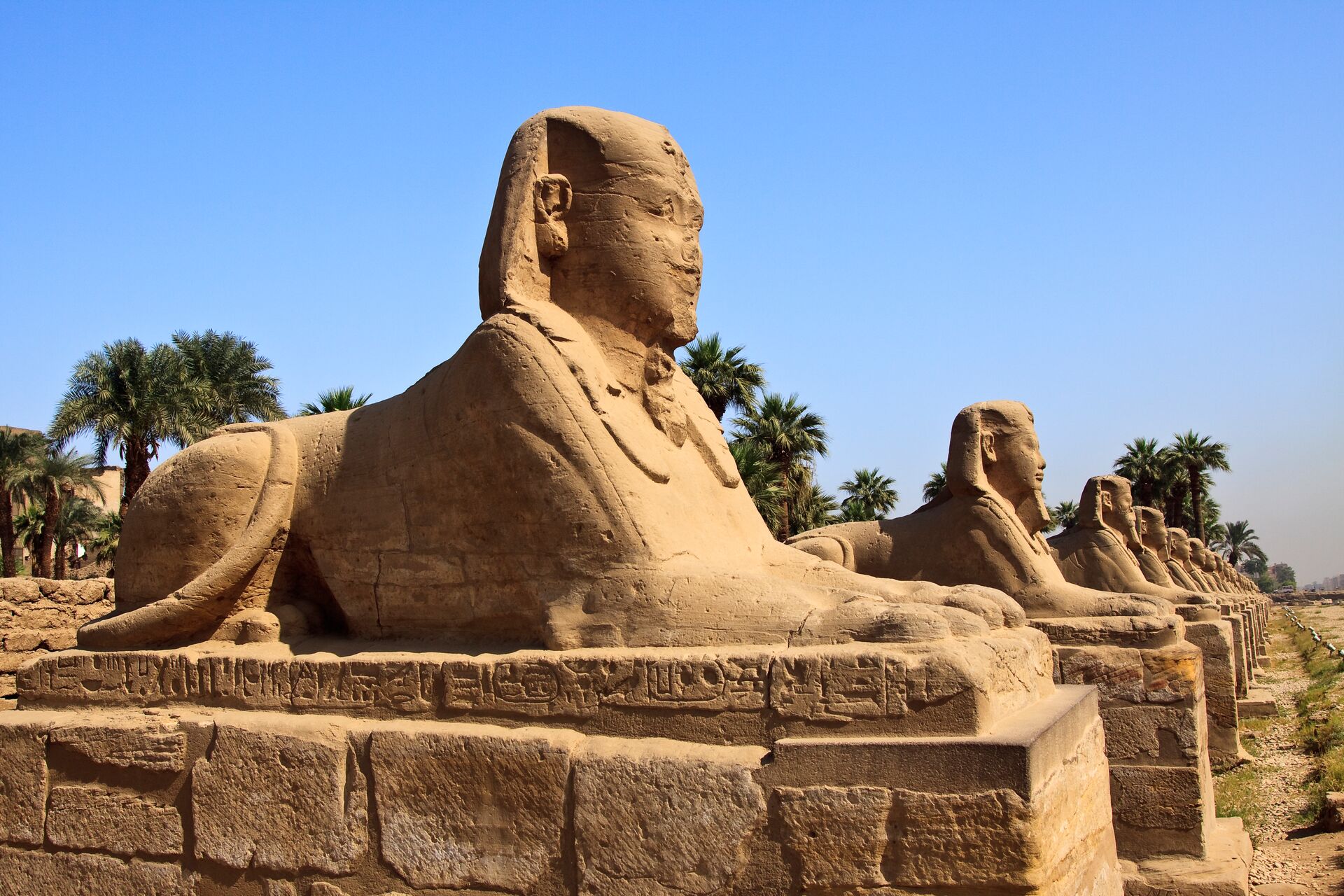
“The Karnak Temple is connected to the Temple of Luxor by a beautiful Sphinx Avenue,” Hani explains, referring to the Avenue of the Sphinxes that was only recently opened in September 2021. “They relocated the locals and moved away the houses that were built above the Sphinx Avenue for years to reveal its full beauty and finally connect the two temples together.
“The fact that visitors can walk between the Sphinxes on the avenue and follow the same road where they used to carry the sacred boat of the God Amun from one temple to another is very special. Most guests do not expect that they are going to be that beautiful and are amazed.”
You might also enjoy: How to embrace the new ‘out of comfort zone’ travel trend in 2023
NILE CRUISE
“There are of course different ways that you can tour Egypt and the Nile, but to cruise the waters between Luxor and Aswan is a truly unique experience,” says Hani. “You get to see much of the daily life of the people which is very special.
“You see the activities that happen on both sides of the river; the farmers, their agriculture, animals being raised on their side of the of the river. All with stunning views.”
You may also be interested to read: Chase the sun, escape the crowds: why September is the best month to travel
THE CATARACT HOTEL
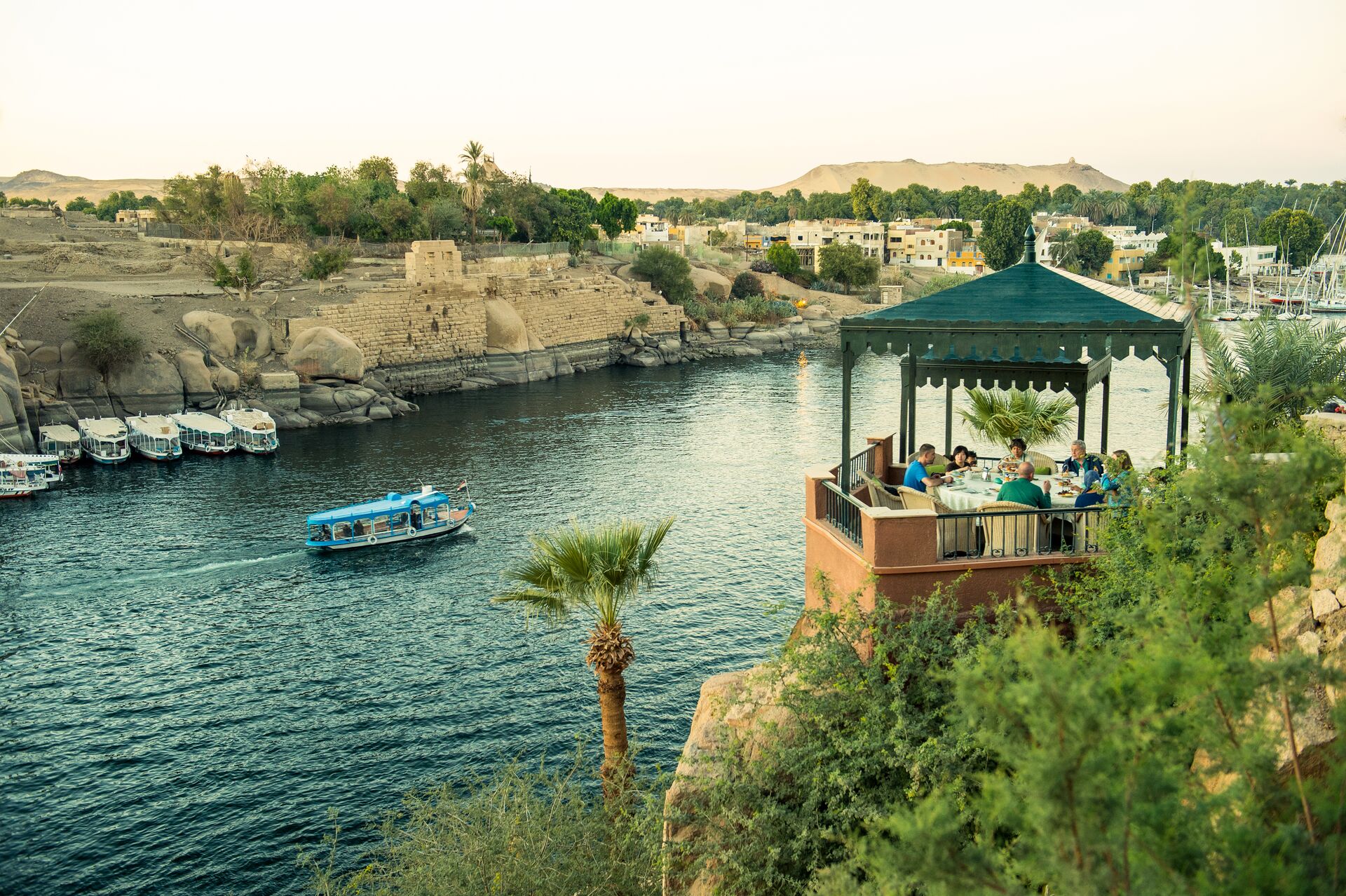
“As part of the four-night cruise along the Nile, we go for ‘high tea’ at the legendary Old Cataract Hotel,” Hani says. “This is a beautiful place to enjoy delicious cake and watch the sunset.”
The famous hotel dates back to 1902 and has hosted the likes of Sir Winston Churchill, Princess Diana and Agatha Christie, who wrote Death on the Nile there.
“Here you can enjoy the most amazing views, looking out over the ruins of 3000 years old Temple, the Mausoleum of the Aga Khan and the River Nile.”
To immerse yourself in this capital of culture and admire Egypt’s treasures, take a look at our Wonders of Egypt premium tour.
